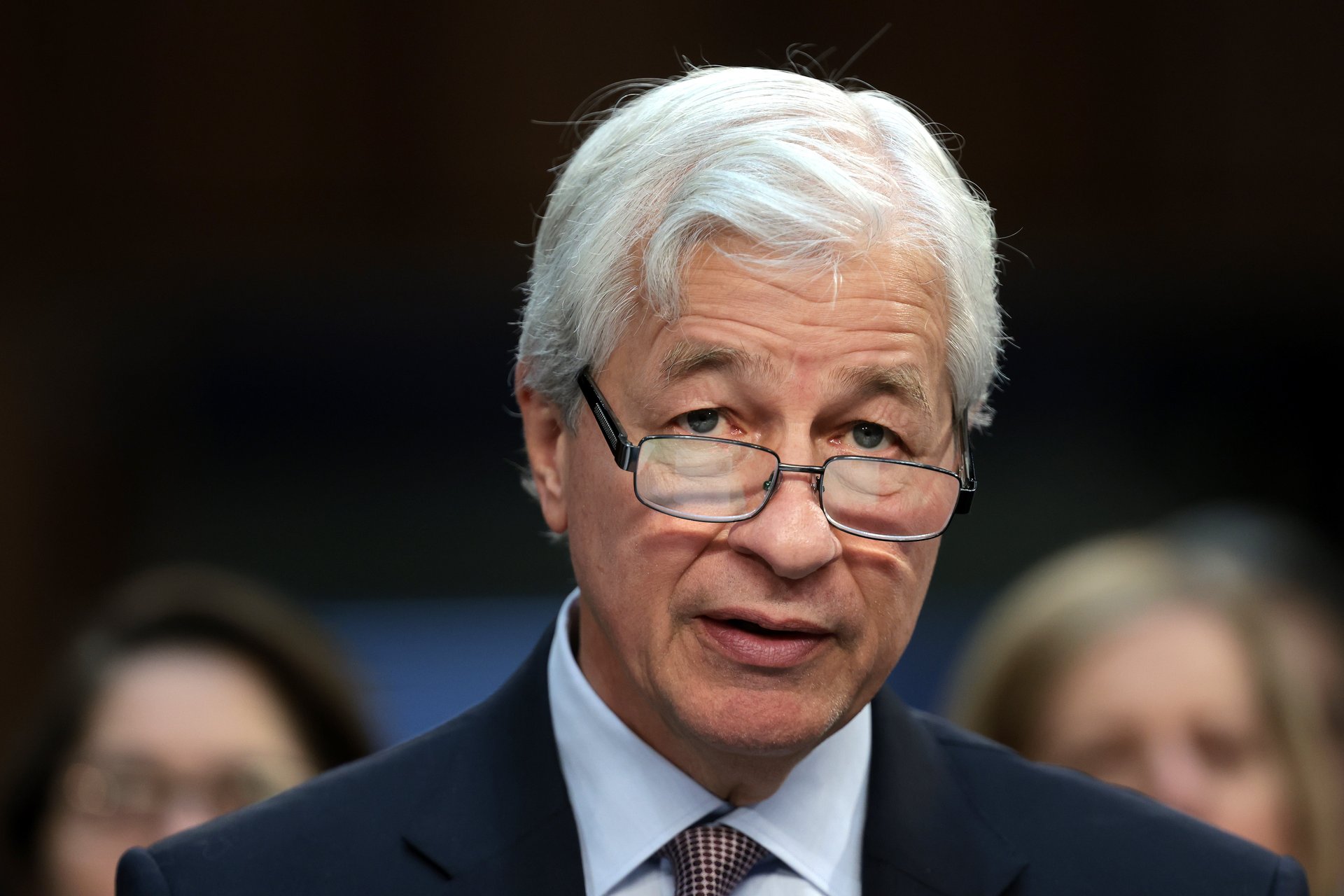Jamie Dimon isn't making a big deal of the Fed interest rate cut
The JPMorgan Chase CEO isn't sure inflation will go away so easily

JPMorgan Chase (JPM) chief Jamie Dimon thinks the Federal Reserve’s first interest rate cut in over four years was “a minor kind of thing.”
Suggested Reading
“It’s a lot of chatter, more talk and hot breath,” Dimon said at The Atlantic Festival in Washington, D.C. Friday. “They did it. I think they should have — 50 basis points.”
Related Content
The central bank set the federal funds rate at 4.75%-5.0% Wednesday, bringing interest rates down from two-decade highs more than two years after it launched its historic inflation-fighting campaign.
Fed Chair Jerome Powell in a post-meeting news conference Wednesday framed the aggressive interest rate cuts as a “recalibration” of policy, given falling inflation and rising employment risks.
“The labor market has cooled from its formerly overheated state, inflation has eased substantially from a peak of 7% to an estimated 2.2% as of August,” Powell said. “We’re committed to maintaining our economy’s strength by supporting maximum employment and returning inflation to our 2% goal.”
In its updated Summary of Economic Projections, the Fed cut its outlook for core Personal Consumption Expenditures, the central bank’s preferred inflation metric, for the rest of the year to 2.3% from 2.6% in June projections. It also lowered its forecast for next year to 2.1% from 2.3%.
Dimon said, however, that he’s “a little more skeptical that inflation is going to go away so easily.” Although inflation has been trending downward, Dimon pointed to a number of inflationary risks that could cause price growth to spike again in coming years.
“The deficits are huge — those are inflationary,” he said, referring to the national debt, which currently more than $35 trillion. “The green economy is inflationary. The remilitarization the world’s inflationary. The restructuring of global trade is inflationary. Demographic is inflationary. I don’t see the massive offsets to that.”
Dimon has repeatedly warned that the U.S. needs to deal with the debt to prevent more problems down the line, including inflation.
The ratio of public debt to gross domestic product is also expected to hit 99% by the end of this year — meaning the government’s debts will be about the same size as the U.S. economy — and could reach an all-time high of 116% by 2034. In contrast, the average debt-to-GDP ratio over the last 50 years was approximately 48%.
And when it comes to a soft landing, Dimon is even less optimistic than the Fed. At the event Wednesday, Dimon reaffirmed his view that he’s not so sure America will get there.
“I wouldn’t count my eggs,” he said. Dimon has previously said he believes there’s a 35% to 40% chance that the U.S. will see a soft landing for the economy.